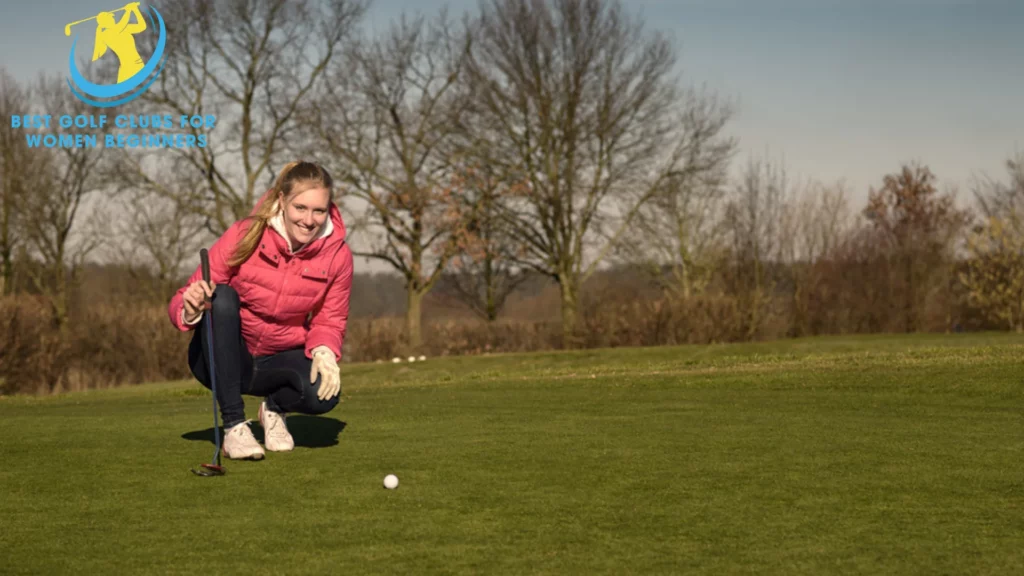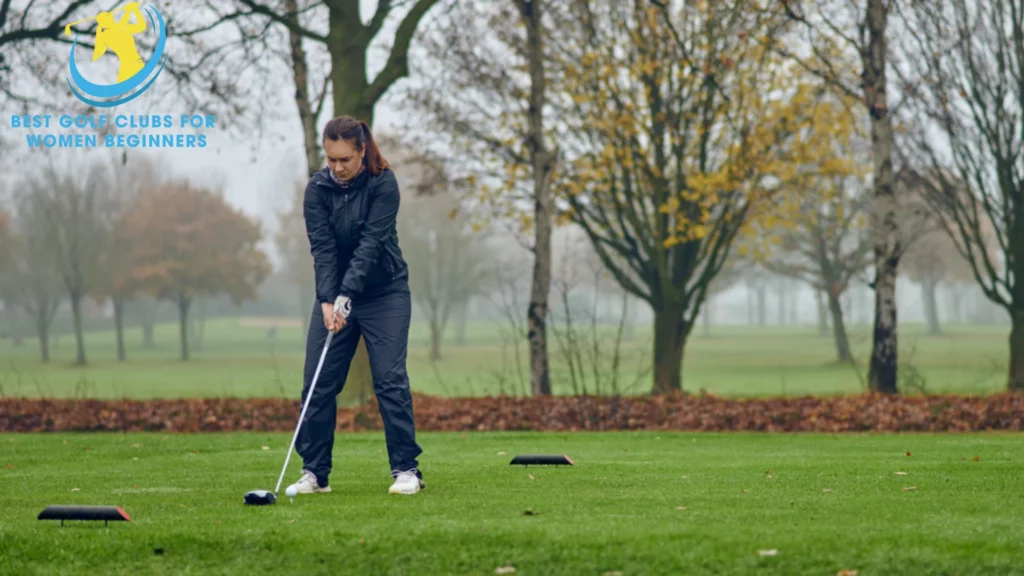What to Wear For Golf In Cold Weather

Popular Articles
Golf is more than just a fair-weather sport, and true fans understand that the game does not end when the temperature drops. However, as you prepare to hit the links in unfavorable weather, the significance of dressing appropriately cannot be overstated. In this comprehensive guide, we’ll look at what to wear for golf in cold weather, ensuring you stay warm, comfortable, and on top of your game even as the temperature drops.
This article may contain affiliate links for cold weather golf attire. If you make a purchase through our links, we may receive a commission that will help support our testing at no additional cost to you. Thank you for supporting our work and mission of outdoor coverage for everybody! Learn more.
Understanding Golfing in Cold Weather
Playing golf in colder climates needs a strategic approach, from your swing to your clothing. Here’s a comprehensive look at how to get over the cold in golf:
- Temperature: Cold weather reduces your body’s ability to perform most effectively. Layering is essential for maintaining body temperature. Begin with moisture-wicking base layers to keep sweat at a distance, then add protecting mid-layers for warmth, and finish with a windproof and waterproof outer shell to protect against harsh winds and rain.
- Wind and humidity: These factors cause the cold’s effects. Wind chill can make it feel even colder, and high humidity can seep through clothing layers, making you feel colder faster. To overcome these challenges, choose wind-protective and breathable gear.
- Safety Concerns: Cold-weather hazards like frostbite and hypothermia are real risks. Proper attire isn’t just about comfort; it’s about staying safe on the course. Insulated gloves, thermal socks, and headwear are crucial for protecting extremities and retaining body heat.
You can stay focused on your game without being pushed back by the cold if you choose golf gear that prioritizes warmth, comfort, and safety.
Golf Wear or Golf Attire For Cold Weather
When preparing for a round of golf in the winter, it’s critical to choose clothes carefully to stay warm, comfortable, and ready to play your best. Here’s a guide to the cold-weather golf attire that combines warmth, comfort, and style.
Winter Top Layers
Base Layer: Start with a cozy, moisture-wicking base layer. This foundational garment is necessary because it traps body heat while releasing sweat, keeping you dry and warm during the game.
Polo Shirt: Wear a long-sleeved polo shirt over your base layer. Choose materials that provide stretch and breathability so you can swing freely and comfortably. A well-fitted polo not only provides extra warmth, but it also maintains the classic golf appearance.
Sweater or Gilet: For added warmth, layer on a lightweight sweater or gilet. Fleece and merino wool are excellent insulation materials that do not add bulk, allowing your swing to be fluid and unhindered.
Waterproof and Windproof Jacket: Finish off your layers with a high-quality, breathable jacket that protects against wind and rain. This outer layer is essential for remaining warm and dry, especially when the weather changes unexpectedly.


Winter Lower Body Layers
Leggings or Long Johns: Underneath your trousers, wear thermal leggings or long johns. They act as a critical barrier against the biting cold, wrapping your legs in continuous warmth.
Golf Trousers: Select trousers specifically designed for golf, made from stretchy, breathable fabrics. This ensures warmth while accommodating all the movements of your game.
Water-Repellent Golf Trousers: Water-repellent trousers are helpful on rainy days. They help keep moisture out, allowing you to stay dry and focused on the game.
Winter Golf Accessories
Waterproof Golf Shoes: Invest in a sturdy pair of waterproof golf shoes to keep your feet dry and stable on slippery terrain.
Winter Golf Gloves or Rain Gloves: Equip yourself with high-quality winter golf gloves. These gloves are designed to offer a strong grip and flexibility, essential for maintaining control and precision in your shots despite the cold and damp.
Dressing smartly with these specially chosen accessories will prepare you to face the elements and enjoy your game, no matter how cold it gets. This thoughtful approach to your golf attire not only improves your performance, but it also allows you to focus on your swing and strategy rather than the weather.




Factors to Consider When Buying Golf Clothes For Cold Weather
There are several important factors to consider when purchasing cold-weather golf apparel. Here’s a closer look at what to remember:
- Insulation and Breathability: Choose fabrics like fleece or merino wool for superior insulation without the bulk. They keep you warm while allowing moisture to escape, preventing the clammy feeling that comes with working up a sweat.
- Wind Resistance: Look for outer layers with windproofing to protect yourself from biting gusts. Wind-resistant materials help keep your body warm, keeping you comfortable while swinging and walking between holes.
- Mobility: Make sure your clothing does not limit your movement. Stretchy materials in key areas, such as the shoulders and elbows, allow you to swing freely while remaining comfortably snug.
- Water Resistance: Although not required, water-resistant clothing can be a game changer on rainy days or wet grass. They prevent light rain and morning dew, keeping you dry and focused.
- Layering Strategy: Master the method of layering. Begin with a moisture-wicking base layer to control sweat, then add insulating midlayers for warmth, and finish with a windproof or waterproof shell as needed. This versatile approach allows you to adapt your outfit to changing weather conditions throughout the day.
- Visibility: Select colors that stand out against the course backdrop, particularly in low light or fog. Bold, bright colors or reflective accents ensure you’re visible to other golfers and any errant shots.

Tips For Staying Warm When Playing Golf In Cold Weather
Playing golf in cold weather presents particular difficulties, but with the right approach and equipment, you can stay comfortable and perform well. Here’s how you can improve your winter golfing experience.
- Layer Wisely: Accept the “onion strategy”—multiple thin layers. Begin with a snug, moisture-wicking base layer that will keep sweat off your skin. Add insulating mid-layers, such as a fleece or a wool sweater, to effectively trap heat. Wear a breathable, windproof, and waterproof jacket to protect yourself from rain, snow, and wind. Layering allows you to adjust your warmth throughout the day by adding or removing layers as necessary.
- Stay Dry: Wet clothes are your worst enemy in cold weather. Invest in high-quality waterproof golf shoes and gloves. Waterproof trousers and a good hat will also prevent heat loss and keep you dry, increasing your comfort and concentration on the game.
- Keep Moving: Keep your body active to maintain warmth. Walk briskly instead of using a golf cart. While waiting, do some light stretching or jogging in place. These activities help sustain your core temperature and ensure that your muscles stay flexible and ready.
- Warm-Up Routine: Before beginning your round, perform a dynamic warm-up routine. Spend 10-15 minutes stretching your arms, legs, and back to increase flexibility and reduce the risk of injury. A good warm-up also increases your body temperature, which can help you perform better in cold weather.
- Hydration and Warm Drink: Cold weather can be deceptive in terms of hydration. Drink water regularly, and carry a thermos with a warm beverage like herbal tea or broth. These warm liquids can provide internal warmth and help maintain your energy levels.
- Using Heat Packs: Portable heat packs can be game changers. Put them in your pockets, gloves, or even shoes. These packs provide a consistent source of heat, preventing your hands and feet from becoming too cold, which is essential for dexterity and comfort.
- Music and Mental Engagement: A small, wireless headphone playing your favorite upbeat songs or an engaging audiobook can boost your mood and distract you from the cold. This mental stimulation is especially useful during the slower parts of the game.
- Protect Your Equipment: Cold can affect your equipment’s performance. Use a golf ball that is designed for lower temperatures, which will likely perform better. Also, keep your golf balls warm, perhaps in an inside pocket, until you use them to prevent loss of distance.
- Change Playing Style: Cold air is denser and can shorten the ball’s travel distance. You may need a stronger club than usual. Be aware of how the cold affects the greens, which may be harder and faster, and adjust your putting strategy accordingly.
Additional Golf Accessories for Improved Comfort and Performance
Consider these extras to enhance your comfort and performance on cold days:
- Hand warmers and pocket heaters: Provide small but significant comfort on extremely cold days.
- Neck gaiters and scarves: On cold mornings, a neck gaiter can help keep you warm without restricting your movement.
- Golf umbrellas: A strong, wind-resistant umbrella can be your best friend during sudden squalls.
- Sunglasses: Even in the winter, glare can be problematic. In the winter, sunglasses designed for low-angle sunlight can help reduce strain and improve visibility.
- Golf Hats and Beanies: Wearing a snug-fitting golf hat or beanie keeps your head warm and prevents heat loss through your scalp, helping to maintain overall body warmth. Look for hats that wick sweat away from your forehead, ensuring comfort throughout the course.
- Golf Towel: Golf towels are a versatile accessory that can be useful on cold golf days. Use it to clean clubs, keeping grips dry and ensuring an effective grip even in damp conditions. A soft and absorbent towel can be used as a neck warmer in a pinch, providing extra warmth and comfort during brisk rounds.

FAQs
Q1: What temperature is too cold for golf?
This is largely dependent on personal comfort and preparedness with the right golf attire. With the right gear, you can play comfortably in temperatures just above freezing, but keep in mind wind chill and humidity.
Q2: Can cold weather affect my golf balls?
Yes, golf balls tend to travel shorter distances in colder air. Consider using a softer ball during winter months for better performance.
Q3: How can I prevent my gearfrom getting wet in the snow?
Invest in high-quality waterproof bags and covers for your equipment, and consider using waterproof sprays for extra protection.
Final Thoughts
Equipping yourself with suitable cold-weather golf attire not only allows you to play golf during the winter but also makes it more enjoyable. Remember that the key to comfort and performance in cold weather lies in choosing the right layers and fabrics. Investing in quality cold-weather golf gear ensures more rounds of enjoyable golf, regardless of the weather. Stay warm, and we’ll see you on the course!
We’d love to hear about your cold-weather golf tips and experiences! Share your thoughts in the comments section below, and remember to dress warmly outside.



